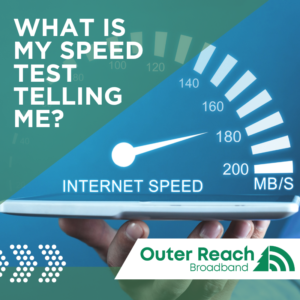Outer Reach Broadband is the culmination of years of effort put forth by Mainers striving to deliver fast, reliable and affordable broadband access in the rural and traditionally underserved communities of Maine and broader New England. At Outer Reach our goal is to be part of the solution with regard to the challenges presented by the “rural broadband gap” and “digital divide” in Maine and beyond. We recognize the challenges that geography can pose to communities which do not demonstrate a certain population density and we strive to connect all members of the community using cutting edge technology and design.
What is the “Digital Divide?”
In short, the concept of the “digital divide” is meant to represent the divide between areas that have reliable access to high-speed reliable broadband internet service (defined by the FCC as a minimum of 25 megabits per second download and 3 megabits per second upload speeds) and those that do not.
How many Americans do not have access to the internet, as defined by the FCC?
Many in the industry believe this is an artificially low estimate, due to outdated data gathering methods, and Microsoft estimates the number could be as high as 162 million Americans without broadband access (as defined above).
We believe that the “digital divide” is a true obstacle to growth, enrichment and education across many of Maine’s communities and we are working every day to bridge that gap. Further proof of that can be found in the following literature which we use to highlight the issues associated with the lack of broadband connectivity .
- Per the Pew Research Center – Rural residents go online less frequently than their urban and suburban counterparts. Roughly three-quarters (76%) of adults who live in rural communities say they use the internet on at least a daily basis, compared with more than eight-in-ten of those in suburban (86%) or urban (83%) areas. Meanwhile, 15% of rural adults say they never go online, compared with less than one-in-ten of those who live in urban communities (9%) and those who live in the suburbs (6%).
Source: Pew Research – May 2019 - According to a 2020 Pew Research Center analysis of the “homework gap” regarding the effects of students being required to attend school from home during the COVID-19 pandemic 29% of parents with homebound children reported that their children would have to do their homework on a smartphone and 22% reported that their children would have to use public WiFi to finish their schoolwork because there was not a reliable internet connection at home.
Source: Pew Research – September 2020 - In a separate survey the Center conducted in 2018, adults who live in rural areas were more likely to say that getting access to high-speed internet is a major problem in their local community: 24% say this, compared with 13% of urban adults and 9% of suburban adults.
Source: Pew Research – September 2018 - Per a 2016 study from Burning Glass Technologies which analyzed its database of about 27 million online job postings from 2016 to determine whether digital skills had an impact on pay and jobs available. Burning Glass found “the number of jobs with digital skill requirements is growing faster, and the jobs pay more and offer greater opportunity for career advancement than jobs without those requirements.” Jobs that require less in the way of digital skills are concentrated in a few industries, among them construction and transportation. Baseline digital skills pay 17 percent more than non-digital roles.
Source: Burning Glass – Middle-Skill Workers and Careers - Regarding demographic and employment trends, a study through Purdue University (The Daily Yonder) looked at demographic trends across the United States and compared those with broadband access and employment. Certain key findings of the study, which focused on data from 2010 to 2016, include –
- The US added 19.4 million jobs over the period of which 95% were in metropolitan counties compared to only 2% in rural counties;
- When looking at counties with a population of less than 2,500 and not next to a metropolitan area it is interesting that the study found a 13.5% increase in the millennial population in the counties with the lowest “digital divide” while the least connected counties experienced a 3.2% decline in total population.
Source: The Daily Yonder – April 2018
We believe that the information cited above provides interesting and realistic insight into the geography and demographic / economic trends seen in Maine over recent years. At Outer Reach Broadband we take seriously our position as a business and thought leader in Maine and we intend to use that role for the betterment of both individuals and the State. Regarding the future of Maine, the development of better broadband connectivity has been highlighted at all levels of government from community organizations to the State legislature as a key in the State’s economic development. We intend to be a proactive partner as communities build to…
What’s Happening

A step-by-step guide for using advanced features for your Facebook Business Page. Episode 3 of...


